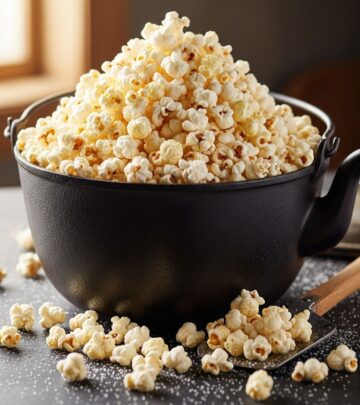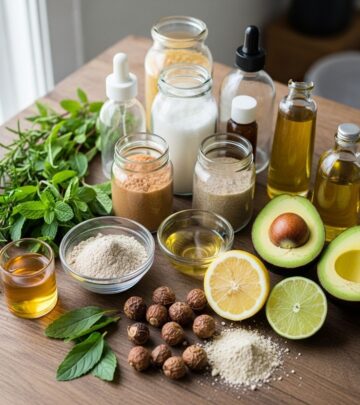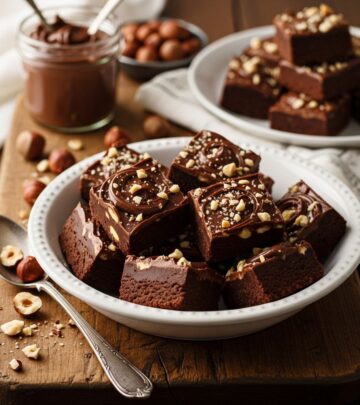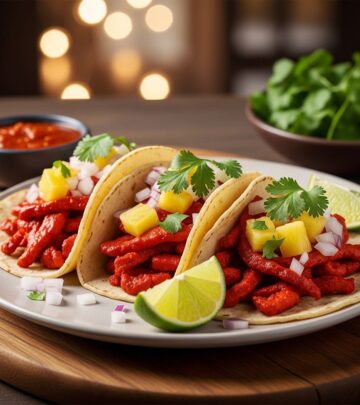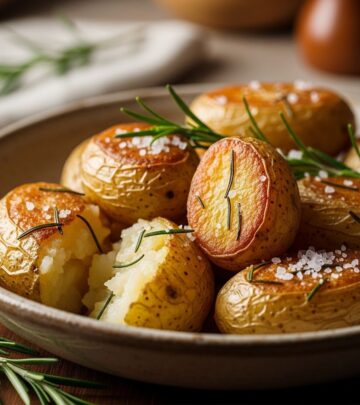Easy Homemade Gorditas: A Step-by-Step Guide to Authentic Mexican Flavor
Turn fresh masa into crisp pockets perfect for creative fillings at your next taco night.
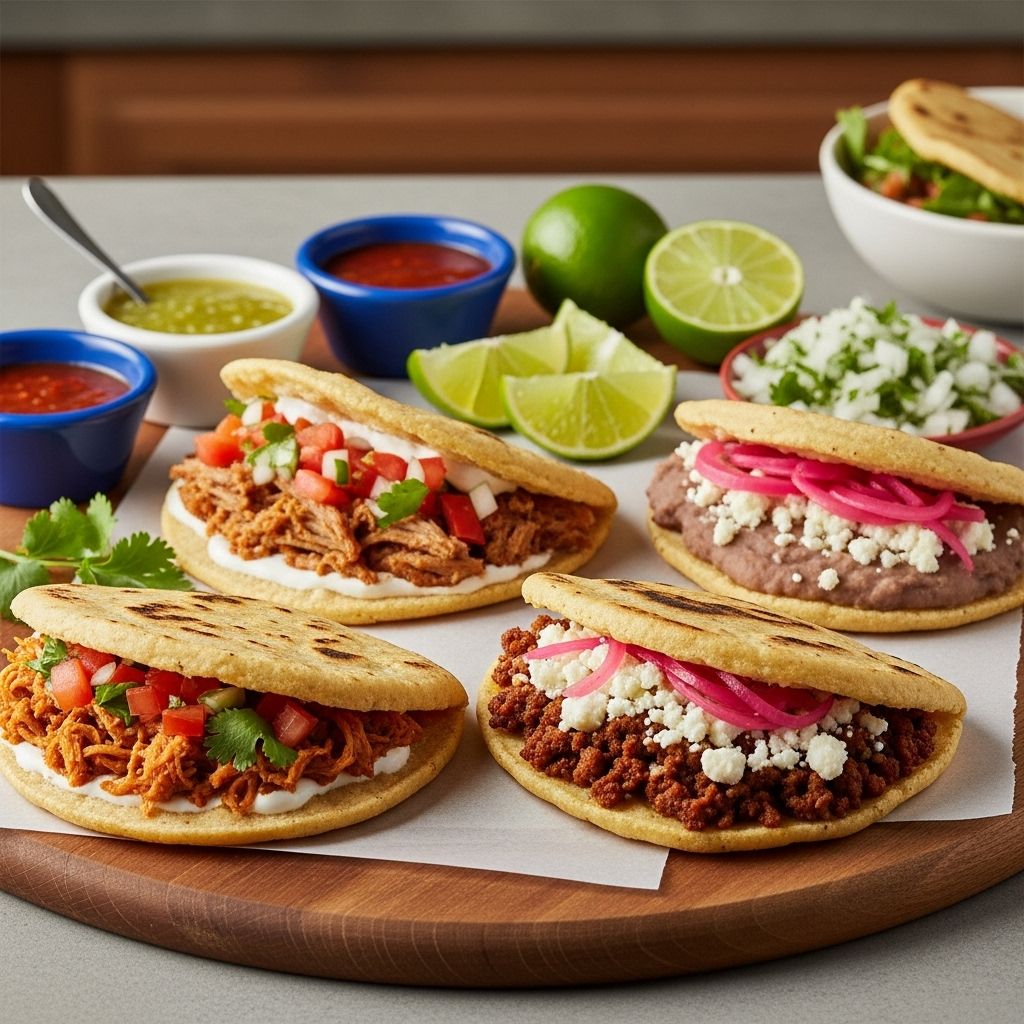
Image: HearthJunction Design Team
If you’re craving an authentic taste of Mexican street food, homemade gorditas deliver a hearty, satisfying meal. These thick, fluffy corn cakes are split and stuffed with flavorful fillings like chorizo, sautéed onions, fresh cheese, and vibrant veggies. Once you master the simple masa dough and frying technique, you may never look at the Taco Bell menu in quite the same way again!
Read on for a step-by-step gordita recipe, customization tips, and answers to the most common questions about this Mexican staple.
What Are Gorditas?
Gorditas—which translates to “little fatties”—are a beloved Mexican snack or meal made from masa harina (nixtamalized corn flour). Shaped into thick rounds slightly larger than tortillas, gorditas puff up as they cook, allowing them to be slit open and stuffed with a variety of fillings.
- Texture: Gorditas are denser and thicker than regular tortillas, offering a soft interior with a slightly crisp exterior (especially if fried).
- Versatility: Traditionally filled with savory ingredients like chorizo and potatoes, beans and cheese, or picadillo, gorditas serve as a canvas for leftovers and creative flavor combinations.
Think of them as Mexico’s answer to pita bread—delicious pockets ready for endless fillings!
The Essential Ingredient: Masa Harina
The secret to perfect gorditas lies in masa harina, a finely ground flour made from corn that has been soaked in an alkaline solution (nixtamalization). This gives masa a unique flavor and texture that’s foundational in Mexican cuisine, used for tortillas, tamales, sopes, and more.
- Masa harina is widely available in grocery stores and Latin markets.
- Brands like Maseca and Bob’s Red Mill are popular choices.
Tip: Do not substitute cornmeal or regular corn flour; they will not yield the proper dough texture.
Ingredients
This easy gorditas recipe makes about 8–10 gorditas, depending on size. Feel free to double or halve the recipe for more or fewer servings!
- 2 cups masa harina
- 1 teaspoon kosher salt
- 1 1/4 to 1 1/2 cups warm water (more or less as needed)
- 1/4 cup lard or vegetable shortening (adds richness & flexibility; use oil for a vegetarian version)
- 2 tablespoons vegetable oil or lard (for frying)
- Filling of choice: see suggestions below
- Garnishes: queso fresco, chopped tomato, fresh cilantro, sautéed onions
Step-by-Step Instructions
1. Mix the Dough
- In a large bowl, whisk masa harina and salt to combine.
- Slowly add warm water, mixing with your hand to form a soft dough that holds together without sticking.
- Add the lard or shortening and knead until thoroughly incorporated—the dough should feel soft, pliable, and slightly drier than Play-Doh.
- Cover the bowl with a clean kitchen towel and let the dough rest for about 15 minutes.
2. Shape the Gorditas
- Divide the dough into 8–10 equal pieces and roll each into a ball.
- Using your hands or a tortilla press lined with plastic wrap, flatten each ball into a disk about 1/2-inch thick and 4 inches wide. They should be notably thicker than tortillas.
3. Cook the Gorditas
- Heat a heavy skillet or cast iron pan over medium heat. (A griddle or comal also works.)
- Cook each gordita on the dry skillet for 1–2 minutes per side until golden brown spots form and the dough firms up. They may puff slightly.
4. Fry for Crispness (Optional but Traditional)
- For a crispier exterior, heat the 2 tablespoons oil or lard in the skillet.
- Pan-fry each gordita for 30–60 seconds per side, until lightly golden and crisp. Drain on paper towels.
5. Make the Pocket
- Let the gorditas cool slightly. When just cool enough to handle (but still warm), use a paring knife to slice open one side, creating a pocket.
- Be careful not to cut all the way through—think of it as slicing open a pita pocket.
6. Fill and Garnish
- Fill each gordita generously with your chosen filling (see ideas below).
- Top with crumbled queso fresco, chopped tomatoes, cilantro, and extra onions if desired.
Tasty Filling Ideas
- Classic chorizo and sautéed onion: Brown ground chorizo, then cook onions until soft and sweet.
- Refried beans & shredded cheese: A vegetarian staple that is rich and satisfying.
- Picadillo: Seasoned ground beef with tomato, potatoes, and chilies.
- Carnitas or pulled chicken: Slow-cooked meats, shredded and seasoned.
- Potato and poblano peppers: For a hearty, mildly spicy vegetarian option.
- Fresh toppings: Chopped lettuce, pico de gallo, salsa verde, guacamole, lime wedges.
Tip: Gorditas are perfect for leftovers—try filling them with last night’s taco meats, roasted vegetables, or anything you enjoy.
Serving Suggestions & Customization
- Serve hot or warm, fresh from the skillet with sides of salsa, hot sauce, or crema.
- Pair with Mexican rice or a simple salad for a complete meal.
- Mix and match fillings for a colorful party platter with a variety of flavors and textures.
Whether you’re hosting a taco night or meal prepping quick lunches, gorditas offer a fun, interactive way to explore Mexican flavors in your own kitchen.
Expert Tips For Success
- Water Matters: The amount can vary by brand of masa harina and your kitchen’s humidity. Add water gradually—a too-wet dough won’t puff up; a too-dry dough cracks.
- Don’t Overcook: Undercooked gorditas won’t puff or will be doughy inside. Watch for browning and a light golden exterior.
- Stuff While Warm: Gorditas are easiest to slice and fill when warm from the skillet.
- Get Creative: Use any fillings you love—gorditas are incredibly forgiving.
Frequently Asked Questions (FAQs)
What’s the difference between gorditas and sopes?
Sopes are also made from masa harina but are shaped with a rim to hold toppings like mini pizzas, not split and stuffed. Gorditas are thicker and sliced to form pockets for fillings.
Can I make gorditas gluten-free?
Yes! Masa harina is naturally gluten-free. Just make sure all added fillings and toppings are also free of gluten-containing ingredients.
How do I reheat leftover gorditas?
Reheat in a dry skillet or oven at 350°F until warmed through. Avoid microwaving, which can make them chewy.
What’s the best oil for frying gorditas?
Use any neutral oil with a high smoke point, like vegetable, canola, or sunflower oil. Traditional recipes also use lard for extra flavor.
Why didn’t my gorditas puff?
- The dough may be too dry or overworked.
- The pan may be too hot or too cold.
- Gorditas should be cooked on medium heat for air pockets to form.
How can I freeze gorditas?
Wrap cooled, uncut gorditas tightly in plastic wrap and store in an airtight bag for up to 2 months. Reheat on a hot skillet or in the oven before stuffing and serving.
Are gorditas spicy?
Not by themselves, but they’re a great vehicle for spicy fillings and salsas. Adjust the heat by choosing mild or hot toppings as desired.
Nutrition Information (per gordita with chorizo filling)
| Nutrient | Amount |
|---|---|
| Calories | 210 |
| Fat | 9g |
| Carbohydrates | 25g |
| Fiber | 3g |
| Protein | 6g |
| Sodium | 350mg |
*Values are approximate and will vary depending on portion size and filling choices.
Conclusion: Why Make Gorditas at Home?
Gorditas are not just a meal—they’re a fun cooking adventure! By mastering the easy masa dough and unleashing your creativity with fillings, you get to enjoy one of Mexico’s most beloved street foods right in your own kitchen. Homemade gorditas are fresh, customizable, and perfect for sharing with friends and family. ¡Buen provecho!
References
Read full bio of Shinta



